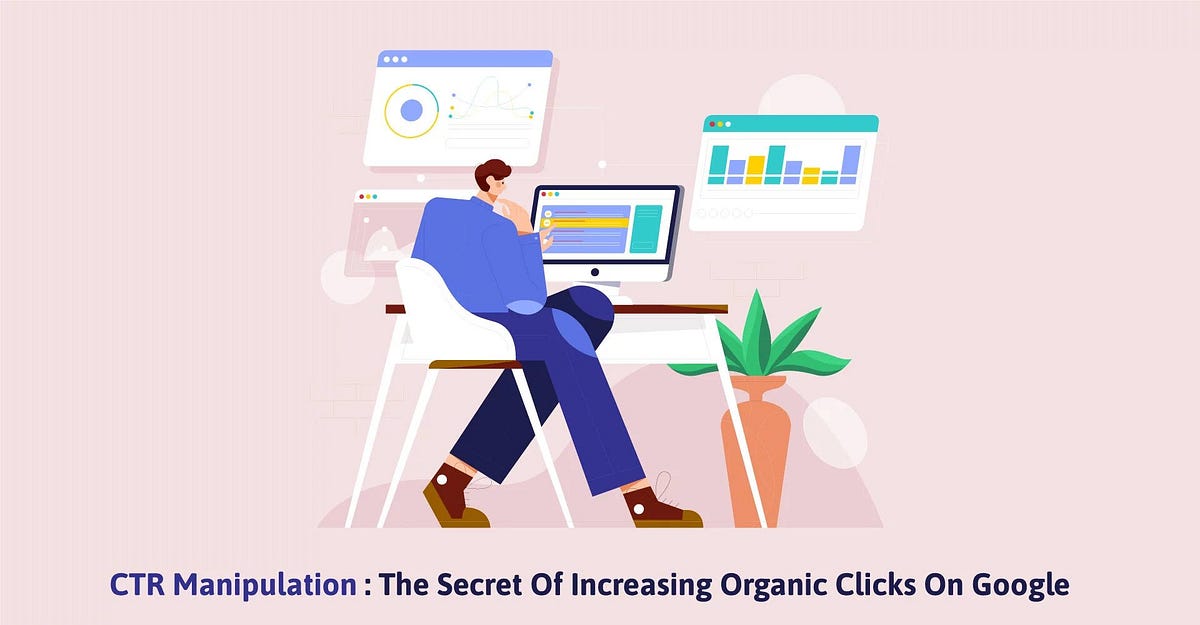Reliable CTR Manipulation Service for Boosted Click-Through Rates
Wiki Article
Unlock Greater Click-Through Fees With CTR Control Insights
Attaining greater click-through rates (CTR) is not merely a feature of compelling content; it entails a nuanced understanding of target market behavior and the emotional triggers that affect decision-making. By exploring approaches such as efficient title and meta description optimization, along with the application of A/B testing, marketers can dramatically improve their outreach initiatives. Nevertheless, real obstacle depends on the continuous evaluation of performance metrics to identify what absolutely resonates with customers. What insights can be obtained from this information that may redefine your method to involvement?Comprehending Click-Through Fees
Click-through prices (CTR) serve as an important statistics in digital advertising, giving insight into the efficiency of on-line advertisements and content. CTR is computed by dividing the number of clicks an ad or web link obtains by the variety of times it is shown (impressions), then multiplying the result by 100 to reveal it as a percent. A greater CTR indicates that the content resonates well with the target audience and motivates involvement, while a reduced CTR might recommend that the content is not compelling or relevant enough.Comprehending the elements that affect CTR is crucial for maximizing electronic marketing strategies. Key elements include the quality of the ad copy, the relevance of key words, and the visual appeal of the advertisement. Additionally, placement and timing play a significant role; advertisements placed plainly or shown during top engagement hours are likely to achieve greater CTRs. By checking and analyzing CTR data, online marketers can determine trends and adjust their projects appropriately to enhance performance. Inevitably, a detailed understanding of CTR enables marketers to improve their techniques, improve user involvement, and maximize roi in their electronic marketing initiatives.

The Psychology of Clicks
Understanding the psychology behind customer communications with electronic material is vital for boosting click-through prices (CTR) Human habits is affected by different cognitive prejudices and emotional triggers, which marketers can leverage to improve customer engagement. One considerable element is the principle of deficiency; when customers view material as limited or exclusive, they are more probable to click. This urgency take advantage of the fear of missing out on out (FOMO), motivating immediate activity.
In addition, the framing result impacts how info is presented. Favorable framing-- stressing benefits and gains-- can be extra compelling than negative framing, which concentrates on losses (CTR Manipulation Press Release). Marketing professionals who comprehend these psychological concepts can craft messages that reverberate much better with their target market, resulting in greater engagement prices
Ultimately, a deep understanding of the mental factors influencing clicks permits online marketers to make much more reliable campaigns, guaranteeing that their material not only stands out however additionally motivates individuals to act.
Effective Title and Meta Description Techniques
Crafting compelling titles and meta descriptions is essential for improving individual involvement in electronic advertising and marketing. Making use of action-oriented language and posturing engaging questions can further entice clicks.Similarly, meta descriptions, although not a direct ranking factor, play an essential role in click-through rates. They should be between 150-160 personalities, giving a concise review of the web content while including appropriate key phrases. An efficient meta description ought to answer the user's intent and consist of a phone call to activity, motivating users to click through to your website.
In addition, utilizing emotional triggers or addressing discomfort factors can resonate with your audience and drive engagement. Staying clear of clickbait is necessary; transparency builds trust and boosts individual retention. By regularly upgrading and enhancing titles and meta descriptions based upon efficiency metrics, online marketers can improve their approaches. Eventually, these elements are crucial to not only bring in clicks however also cultivating a much better customer experience, leading the way for boosted conversion rates.
Utilizing A/B Checking for Optimization
A/B screening is a very useful technique for maximizing digital advertising strategies, especially in boosting click-through rates. By comparing 2 or even more variations of a details aspect-- such as headlines, photos, or call-to-action switches-- marketers can figure out which variation reverberates far better with their audience. This data-driven strategy permits informed decision-making, making it possible for services to refine their advertising and marketing efforts efficiently.The process begins by clearly defining the purpose and recognizing the elements to test. For example, a marketing expert could try out differing e-mail subject lines to see which creates greater open prices, ultimately causing raised click-through prices. It is essential to isolate one variable at a time to guarantee that the outcomes are attributable to the adjustments made.
Implementing the winning variant can lead to considerable improvements in efficiency metrics. A/B testing not only boosts click-through rates yet likewise fosters a society of CTR Manipulation Service constant improvement, making certain that advertising strategies advance in line with audience choices and habits.
Analyzing and Readjusting Based on Information
Data-driven decision-making is essential in the realm of digital advertising and marketing, especially when it involves examining and adjusting methods to enhance click-through prices. By systematically gathering and analyzing data, marketers can determine patterns and trends that notify their methods, resulting in extra effective projects.The primary step in this procedure involves gathering pertinent metrics, such as impressions, clicks, and conversion prices. Devices like Google Analytics and heatmap software can supply invaluable insights right into customer behavior, enabling for a much deeper understanding of what reverberates with the target audience - CTR Manipulation Press Release. When the information is accumulated, it is essential to examine it carefully, concentrating on essential performance signs (KPIs) that straight influence CTR
Adjustments ought to be made based on this evaluation, whether that indicates refining advertisement duplicate, modifying design aspects, or targeting different audience sections. Continual screening and model are essential; what works today may not yield the exact same results tomorrow. By promoting a culture of data-driven advertising, services can continue to be dexterous and receptive, inevitably opening greater click-through prices and attaining better project success.
Verdict
To conclude, boosting click-through prices requires a detailed understanding of target market habits and mental elements influencing decision-making. Effective techniques, including the optimization of titles and meta summaries, along with strenuous A/B screening, contribute considerably to improved engagement. Continuous evaluation of efficiency metrics enables for informed adjustments, making certain placement with individual intent. By systematically implementing these understandings, marketing experts can successfully enhance CTR, ultimately driving greater conversion prices and optimizing the effect of their advertising initiatives.Report this wiki page